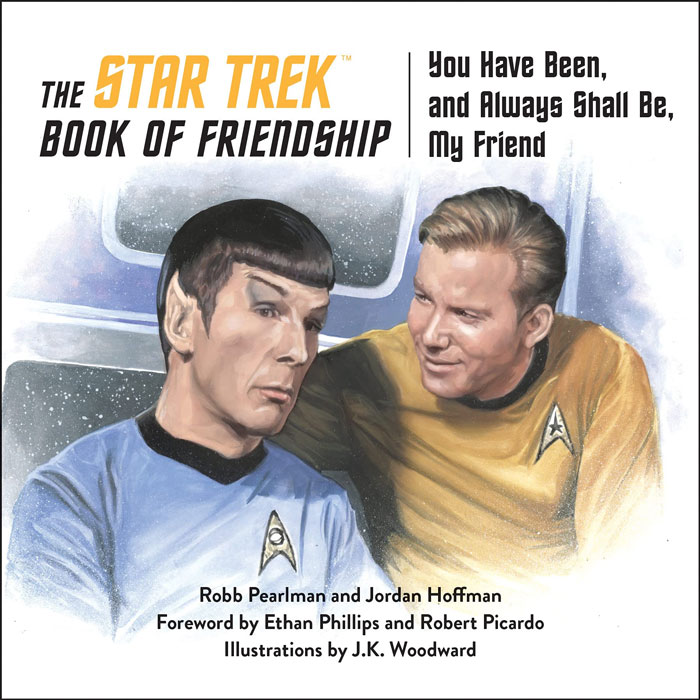Across near-60 years of Star Trek history, the franchise has brought fans a large roster of great friends, from the good-natured ribbing between Spock and Dr. McCoy, to the supportive Burnham and Tilly, to the generation-spanning connection between Ben Sisko and Curzon, Jadzia, and Ezri Dax.
Authors Robb Pearlmann and Jordan Hoffman shine a spotlight on this plethora of pals in The Star Trek Book of Friendship — You Have Been, and Always Shall Be, My Friend, and we had a chance to chat with the pair about their new book.
TREKCORE: For fans who may not associate “friendship” as one of their top five words connected to Star Trek, what’s your pitch on why you wanted to focus on it?
ROBB PEARLMAN: I think if it’s not in the top five, it’s often number six for people! It was always in the top five for me personally.
JORDAN HOFFMAN: Well, it’s funny because you’re right. I think you maybe think about exploration, about making first contact or crazy sci-fi ideas. Then, of course, for a lot of people, Star Trek is all about technology and cool aliens.
I think the number one scene for almost all Star Trek fans out there, though, is the scene that’s quoted in the title ‘”You have been and always shall be…” That is for me, the most emotional and the most important moment of Star Trek — the two hands on the transparent aluminum in the warp core chamber from Star Trek II: The Wrath of Khan. And that is a moment of friendship.
Yes, surely, we need not go to the stars to embrace what we have right here on Earth, which is friendship between people. I think, for sure when Gene Roddenberry went to sell Star Trek to the studios, he wasn’t like, “oh, it’s a great show about friends.”
It’s exploration! It’s science fiction! It’s technology! But it wouldn’t work if you didn’t have cool characters and the friendships they share.
PEARLMAN: I’m only child, so I’ve always been very keenly aware of friendships and non-familial relationships between peers in pop culture. It always stuck out to me in Star Trek.
And going to all of these conventions for all of these years, the one thing that kept occurring to me is how deeply rooted all of these fans’ friendships were and how they all started with Star Trek.
They’re coming from literally all parts of the world, all socioeconomic classes, people who would never meet normally were all brought together by Star Trek. That grew into these amazing, amazing friendships where they look forward to seeing each other once or twice a year.
Yes, they talk about Star Trek all the time but they talk about more than that: they’re sharing their lives together.
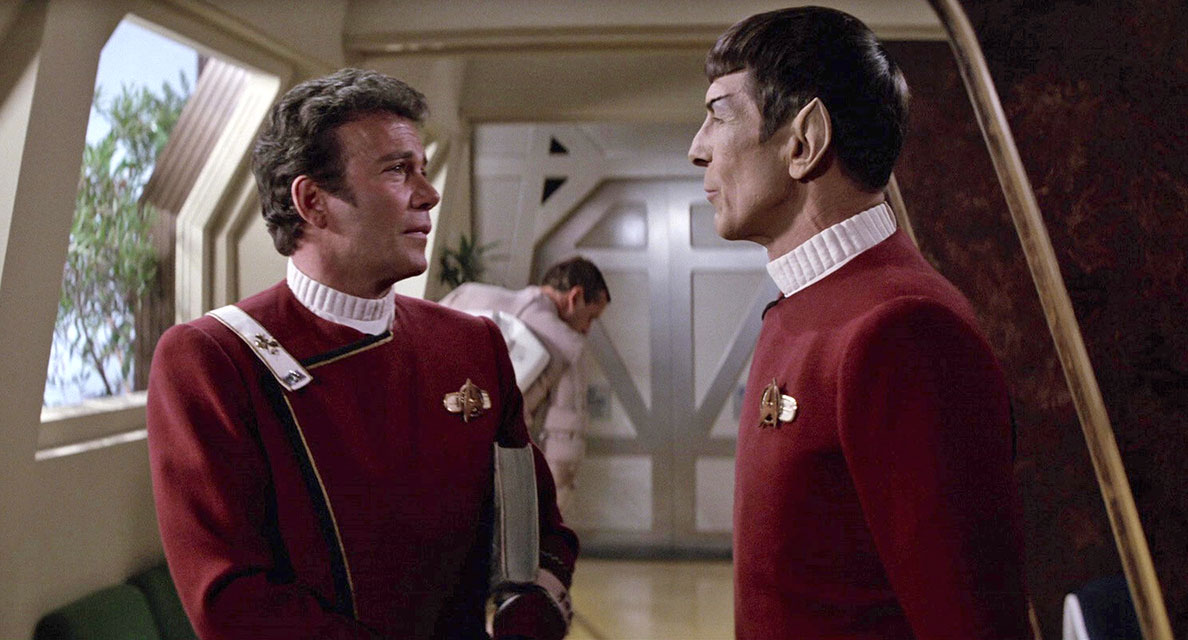
TREKCORE: And to that point, the way you structured this book is as a long conversation between the two of you. How did you land on that as a structure for how to approach this book?
PEARLMAN: Every book I publish, especially every Star Trek book, I have to put my publisher hat on as well as being a writer. I want the books to make sense and to provide something for the readers and the fans.
I know that when they’re spending their hard-earned time and money, they deserve a return on their investment. Everything that I put into a book should have a purpose and I don’t want to just keep throwing things against the wall. I want a book to have a meaning for it.
I kept thinking about this friendship thing and exactly what we were talking about. I was like, well, I want to do something with friendship. I’m not quite sure what it is.
I was starting to come up with ideas. It was a book of lists or more literal and trivial sorts of thing. I was like, if I’m writing a book about friendship, I need to work with a friend to do it. Then I thought, who better than my friend Jordan who likes it as much or will understand where I’m coming from as much as I would.
We started just batting ideas back and forth because it was all during COVID. We were talking over Zoom once and just really trying to figure out the right angle. Then I just had this light bulb moment, and I was like, this is the book! It’s a conversation.
HOFFMAN: We were trying to do our work, which was figuring out what the hell will the book be. We know we’re doing Star Trek friendships, but as Robb and I will do whenever we have the opportunities, we’ll waste time and start talking about how much we love Garak and Bashir, and how much we love all the weird characters like the Gorgon and Armus and things like that, and making jokes about Bones and Spock.
Meanwhile, the clock is ticking, and we were supposed to be on this call to figure out our book. Then Robb realized, wait, this is the book because we’re talking about funny stuff about Garak and Bashir, and Janeway and B’Elanna, and all these things.
Then it just became a case of figuring out which friendships to feature. We figured out roughly two dozen. Then we just set up a series of Zoom calls, where we spoke every Wednesday at 10:00 a.m. for an hour, for as many weeks as we needed to do it to get through everyone.
If we knew oh, next week, we’re going to talk about Malcolm Reed and Trip Tucker, then let’s make sure we watch a few episodes that we haven’t seen in a while beforehand. It was like, “Oh, what are the best Garak and Bashir episodes? let’s make sure we watch them.” or for Bones and Spock, we’d watch “The Galileo Seven.”
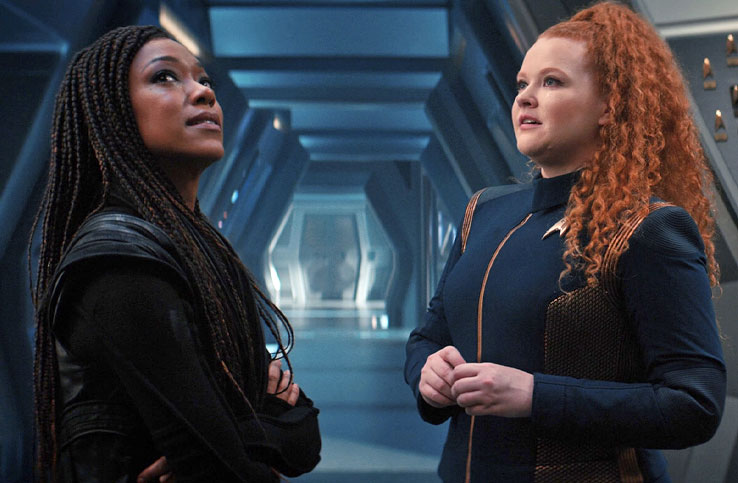
PEARLMAN: Yes, we wanted to make sure that the book had a personality and a point of view, and then it didn’t just read as, oh, this friendship isn’t that great. We wanted to look at it in a multi-dimensional way.
I think for that, we realized that we weren’t able to bring everything to every friendship, which is why we asked our other friend Erin Macdonald to weigh in. We wanted to work with our friend J.K. Woodward on the art because he would understand what we were trying to do, how we were trying to do it, and bring his own personality to it as well.
Then when we were thinking of someone to write the foreword, we thought — who better than real-life friends and onscreen friends than Robert Picardo and Ethan Phillips? It was truly a fan-friend effort every step of the way.
TREKCORE: What was it like working with artist J.K. Woodward on the book’s illustrations? Did you just give him the character pairings or let him approach each section creatively?
HOFFMAN: It was a mix of both. We knew what the pairings were and we did send them to him. For some of them, he took images direct from screenshots, and from others, he used his imagination.
There are some angles that don’t exist in the show that he created. I think there’s an angle of Archer from the outside of the ship, I don’t know where he got that from. Then there are a few where he got creative and would surprise us. The one that I’m most proud of is when we talked about O’Brien and Bashir and their friendship.
We talked about their holosuite adventures, including the Alamo. And I said, as far as I know, we’ve never actually seen them at the Alamo. So we’re like, let’s get J.K. to do something that no one’s ever done. Given that this is an officially licensed product, this is now the only quasi-canonical visual image of O’Brien and Bashir at the Alamo.
You now have J.K’s interpretation of that moment.
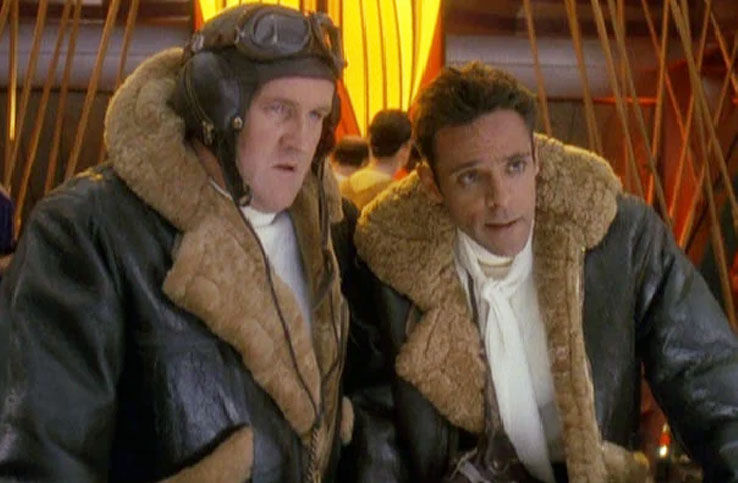
PEARLMAN: Whenever I’m thinking about how a book looks, I’m really thinking about a book holistically, as far as like design, where the text is going to go, and where the art’s going to go.
I tend to give pretty detailed art notes about what I think should happen. I’ve worked with J.K. Woodward before and I knew that I didn’t necessarily need to do that for this book because he knows Star Trek. For the introduction, I thought it would just be fun because this is a conversation between me and Jordan, to have us illustrated in the book as well. I was like, here are just some ideas.
Jordan and I are sitting on a couch watching TV, there’s a bowl of popcorn. He just took that and ran with it and put the hat on, put those Spock ears on. I think because he’s our friend, he understood us and how far he could push it really and what would make it a really good visual for it. It was great!
HOFFMAN: Then the other element that Robb mentioned, bringing in Erin, which I think came from a moment in our conversations when we were talking about B’Elanna and Janeway. We’re talking about the importance of women scientists, their representation on Voyager, and what that meant at the time in the 90s. We can only take that so far, you know? We’re both guys.
I’m pretty sure it was important to women in the sciences, but then Robb’s suggested it would be great if we’re on this imaginary couch watching Star Trek, and our real friend Erin were just to just pop in and out to talk with us. We reached out to her and it was great that she was able to do that. She makes an appearance more than once in the book.
TREKCORE: When you are each watching Star Trek, what kinds of friendships are you most interested in watching?
PEARLMAN: Usually, I’m a little put off by “bros” just because of who I am! I just find that naturally repelling. But I think what the writers were able to do, and what the actors were able to do, with pairings like Bashir and O’Brien or Tom Paris and Harry Kim is start off there and then transcend it.
It became something not necessarily different, but more meaningful for the characters, but also for the viewers themselves. I find “frenemy” relationships endlessly entertaining so I could watch those all day. Give me a good Odo-Quark scene any day. Or Bones and Spock! I find those completely delightful.
But really, maybe it’s just because of the environment that we’re working in now, I just like friends being friends and being really supportive and kind and nice to each other.
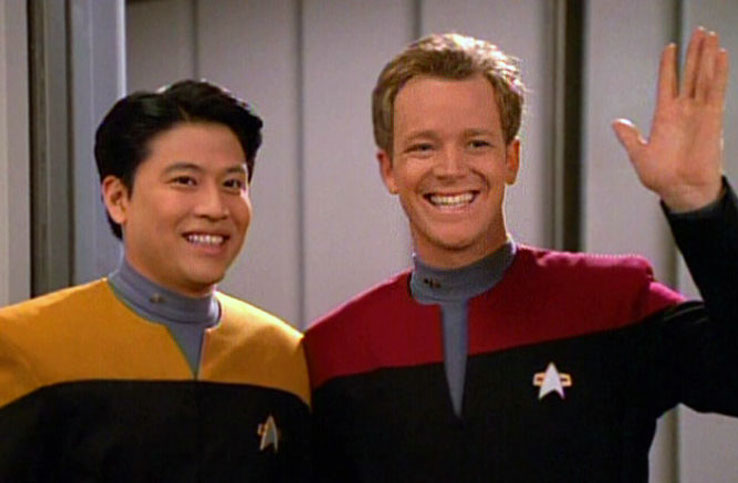
HOFFMAN: Yes, the “frenemy” certainly is the one that has the most crackle and brings the most humor and it’s endlessly watchable. But I think, to Robb’s point, God, when these two individuals would do anything for each other – that’s the best.
I think we talked about the moment from Wrath of Khan as being the quintessential Star Trek moment. If there was a silver medalist for that, it would be the moment at the end of “The City On The Edge of Forever” when Kirk prevents Bones from saving Edith Keeler. He says, “My God, Jim, I could have saved her,” and Spock steps up because Jim can’t even talk. He’s so distraught. He says, “He knows, Doctor. He knows.”
It’s such a simple line, it’s five words. It’s so simple but it’s because you know Spock loves Kirk so much in his own way that he’s the only one that can interpret what he’s feeling at that moment and that comes from a friendship that is a once in a lifetime. If each of us have one of those friendships in our lifetime, we’re lucky.
That sort of deep emotional connection is what makes this so special and I think the fact that it does exist in Star Trek, which is all about openness and exploration, and maybe what you began with, not what you automatically think Star Trek is going to be about, maybe that’s what makes it resonate even more.
TREKCORE: Jordan, you’re a prolific writer, but this is the first book with your name on the cover. What is that like?
HOFFMAN: I’m excited! I’m looking forward to the day when I stumble upon it without prior awareness. That’ll happen eventually. I want to go into the non-comics section of Forbidden Planet and see it there. As one who’s written for newspapers, I have in the past been on the subway and seen somebody reading something I wrote and that’s always a trip because I always want to whisper, “That guy knows what’s talking about.”
It is exciting because it is the first book with my name on the cover and of course, it is a Star Trek book because that is one of my first true loves, one of my big first true love so I’m thrilled.
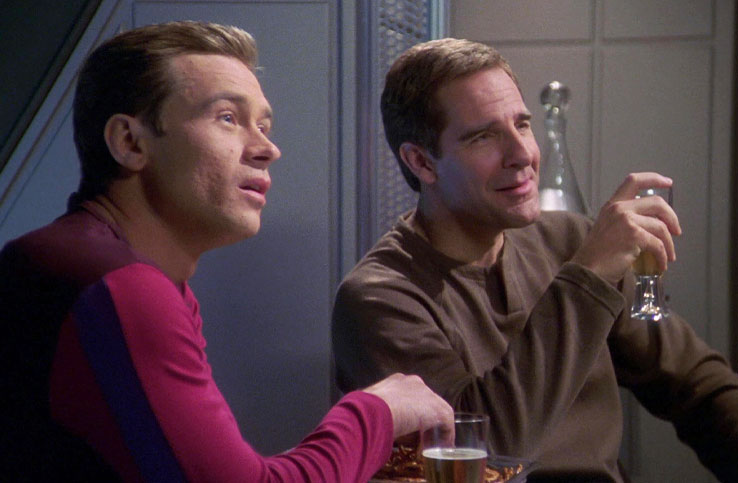
TREKCORE: Meanwhile, Robb, you’ve written a lot of Star Trek books already. What keeps you coming back to doing this again and again and again?
PEARLMAN: It’s so vast, the breadth is so wide, and you can always find something new to talk about it. I think going back to what we were talking about earlier, you can always find something authentic and meaningful to talk about in Star Trek. Something that is going to make people laugh for a little while or make them think for a little while.
I think it’s a gift to me that you can keep going back into these 56 years later and always find a new angle and a new take on it. You can tell from my other books I don’t really do the straightforward kinds of things. I always like looking at things from a different angle and there are so many angles in Star Trek that each are as interesting and worthy as the next one.
HOFFMAN: One of Robb’s biggest gifts is humor. I think Robb’s books all approach Star Trek with humor right up there. Humor has always been a part of Star Trek since the very beginning. Now it’s a little bit more explicit with Lower Decks, but Star Trek has been hilarious. Who’s funnier than Spock? Nobody’s funnier than Spock.
Since day one, humor has been an important part of it and I will dare say, Robb Perlman is an important author of Star Trek humor. He really has been bringing that, drawing that out of the franchise now for a decade.
TREKCORE: What’s next for Hoffman and Pearlman in Star Trek?
HOFFMAN: Well, for me, I’ll say by the time this has published, fans will have just seen me in Chicago, and I will be on the Star Trek Cruise next year. I’ll be wherever Star Trek wants me. Robb and I both live in the New York City area, we will be promoting this book where we can just because we like to meet Star Trek fans, and we’ll have signings where we can and if there’s an event that makes sense for us to be at.
I think that’s and then just, I tend to as a freelance writer, whenever I can think of a way to write about Star Trek for one of my outlets in a provocative way, I always look to do that.
PEARLMAN: For me, after Star Trek: Book Of Friendship, comes The Girl Who Made the Stars, which is an adaptation of the Short Trek. Then I have Trek The Halls, which is a holiday book that’s coming up. Star Trek: My First Book of Colors, which is which is complimentary to Star Trek: My First Book of Space that I worked on with Erin Macdonald.
There’s also a super-secret Star Trek project coming out this year that I can’t talk about yet… but it’s a completely new format for me, so I’m super excited.
![]()
The Star Trek Book of Friendship — You Have Been, and Always Shall Be, My Friend arrives on May 10 and is available to purchase now.

